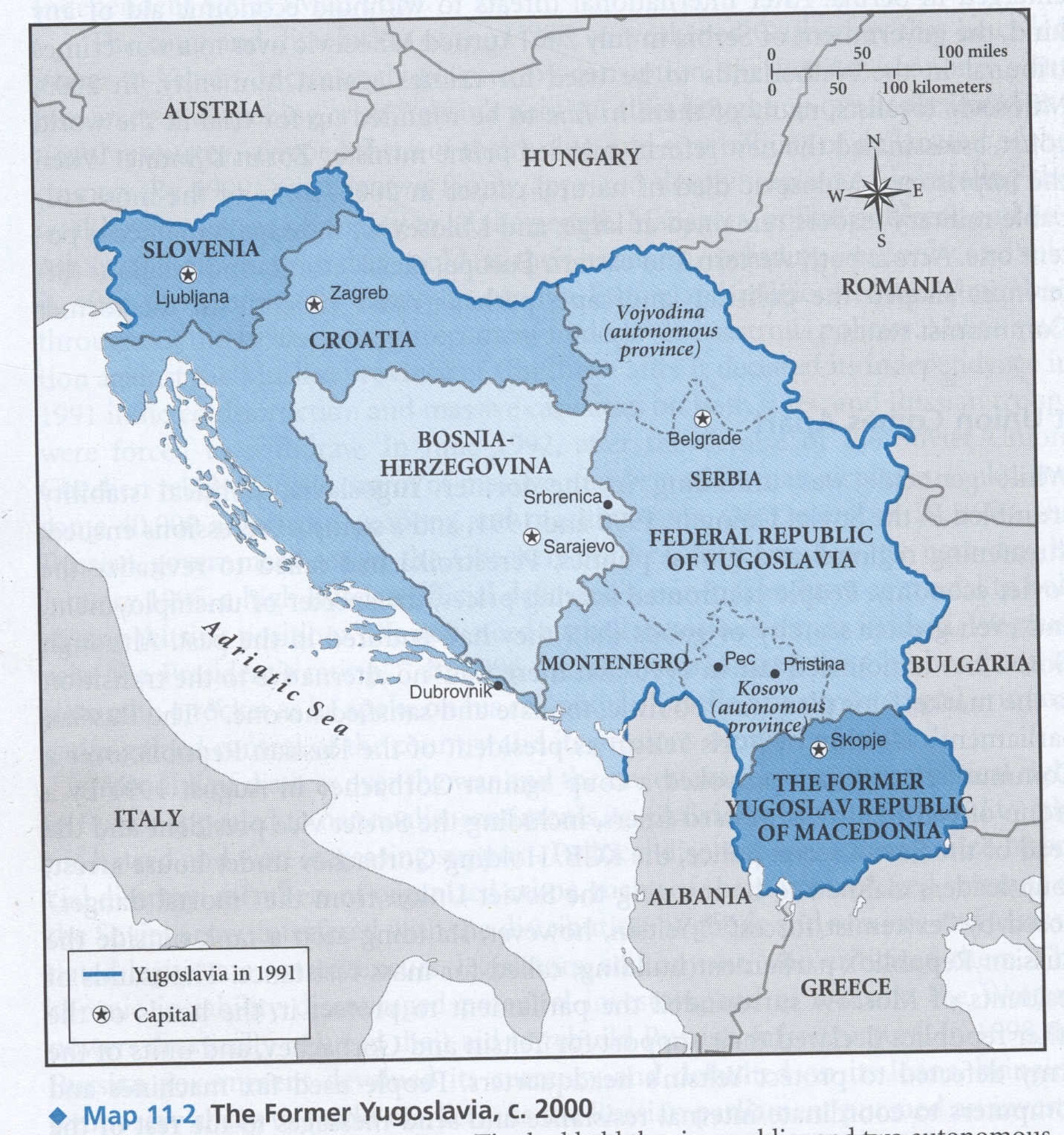Europe Unites? Europe Splits? Developments in the 1990s
I. Fission: Divorce, Eastern European Style
II. The Unification of Germany: A Case of Fusion?
III. The Breakup of Yugoslavia
IV. Postcommunism
one view of 1989:
the universal triumph of
capitalism and liberal parliamentary democracy
the end of the twentieth century’s ideological struggles
“the end of history?” (Fukuyama)
another view of 1989:
eastern and western Europe in
different historical moments
east: fission (breakup of empires and multinational states, nationalism, violent conflict in Yugoslavia)
west: declining nationalism, steadily increasing integration into European Union
obstacles to German unification:
• doubts among leaders of East German citizens’ movements
• doubts among many West Germans (division as price of responsibility for Nazism)
• doubts among neighbors and allies (France, USSR, US)
Helmut Kohl
CDU--Christian Democrats (West Germany)
• March, 1990: first elections in East Germany
• October, 1990: former states of DDR
merge into West Germany
Ossis | Wessis
“Ostalgie” (East-nostalgia)
on the causes of ethnic violence:
"In both the Soviet Union and Yugoslavia, politicians within the various republics turned events in ever more revolutionary and violent directions…ethnicity and ethnic violence emerged as effective tools for ambitious politicians."
(Bonnie Smith, ECW, 641)
“[The Balkan wars of the 1990s] did not just break out from spontaneous ethnic combustion. Yugoslavia did not fall: it was pushed. It did not die: it was killed.”
(Tony Judt, Postwar, 685)
Tito
(Josip Broz)
1. led united Communist partisan movement during WWII
2. muted ethnic rivalries in postwar Yugoslavia
“Yugoslavia”'
map: the former Yugoslavia, ca. 2000
original: Bonnie Smith, Europe in the Contemporary World (Boston/New York, 2007), p. 643.
constituent republics: Slovenia | Croatia | Bosnia-Herzegovina | Serbia | Montenegro | Macedonia
multi-ethnic and multi-religious: Eastern Orthodox | Catholic | Muslim
Slobodan Milosevic (Serbia)
Franjo Tudjman (Croatia)
1991: secession of Slovenia, Croatia
1991: first Balkan War
“ethnic cleansing”: forced expulsion | genocide
1992-1995: second Balkan War
Bosnian Serbs | Bosnian Muslims | Croats
siege of Sarajevo
destruction of Mostar bridge
Srebrenica massacre
refugees: ca. 3 million
deaths: ca. 200,000
“postcommunism”
1. a puzzle: how to make the transition? (another experiment in Eastern Europe)
2. the set of problems characteristic of postcommunist societies
policy options
Gorbachev’s perestroika (economic restructuring) failed
--->“katastroika”
“shock therapy”: rapid transition to market capitalism
(remove price controls, cut subsidies, allow enterprises to fail, incur rising unemployment, cut state spending)
neo-liberalism in West
postcommunism:
problems in the 1990s
1. “kleptocracy” (rule by thieves): unregulated privatization
2. social misery: falling living standards, emigration, prostitution, crime, inequality
3. political backlash: decline of “civic” movements
resurgence of transformed Communist parties
